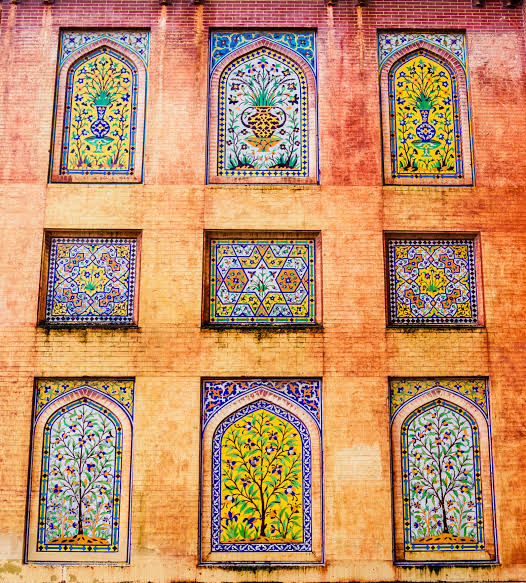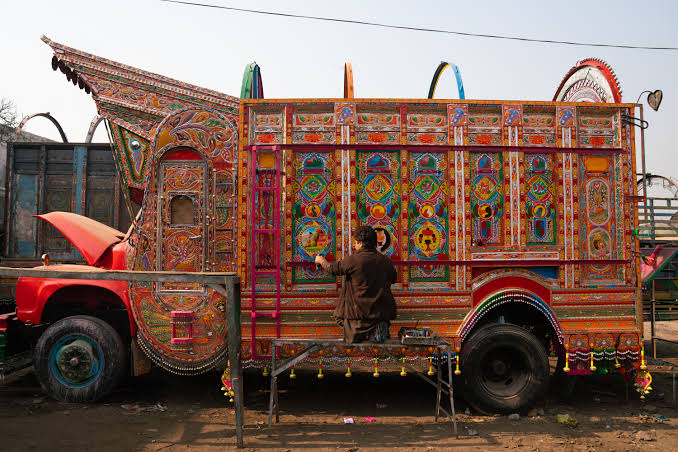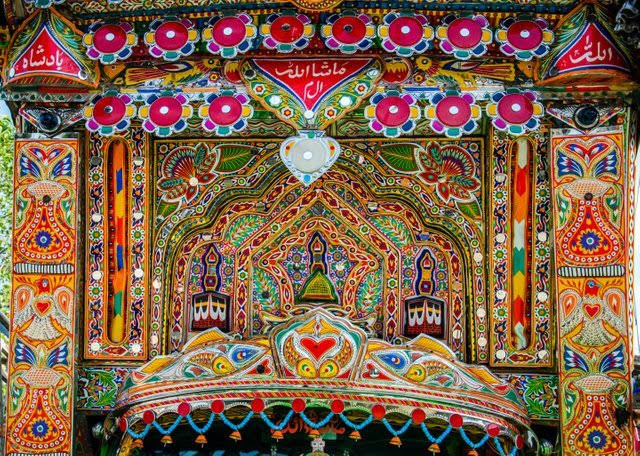Pakistani truck art is an art form for the decoration of vehicles that developed in Pakistan during the initial decades following independence.
The style involves a riot of colours, images, illustrations, motifs, traditional designs, glass work, woodwork and metalworks, often employing poetry and incorporating religious and cultural elements.
Origins and Initiation
Though the art of vehicle decorating in the region is quite ancient with some believing for the people of the bronze age Indus Valley Civilization to have decorated their carts with motifs and designs, the modern style developed after 1947 in Garden Karachi where existed a popular automotive body painting workshop.

After independence the area saw an influx of painters from Lahore, wood and mirror craftsmen from Peshawar and Quetta and metal workers from Rawalpindi. All these professionals from all ends of the newly independent country mixed their skills to create something that was distinctly Pakistani.
Another dominant element came from palatial frescoes and murals. Many painters who developed truck art belonged to long lines of painters who had been employed in royal courts in various parts of South Asia for generations.

These people brought their skills of painting murals, creating exquisite frescoes, decorating ceilings with motifs of all kinds, and plastered them on the exterior and interior of trucks. Some of the oldest artists of Truck art and those who played key roles in its development belonged to families of this age old profession.
The 5 Regional Styles
There are 5 main styles of Truck art. Punjabi Style trucks are most elaborate. With traditional designs, they have metal cowlings above the windshields and heavy metal work. Swati style is known for using traditional swati woodwork along with the typical design in the form of carved wooden doors.

Peshawari style is intermediate between Punjabi and Swati styles. Balochi style is present on larger trucks with chrome modifications on bumpers and Karachi style unites elements from all 4.
The Distinctiveness of Style
The art form uses bright florescent colors, invasive floral and geometric motifs, shiny metallic embellishments, thick crude brush work and flamboyantly painted portraits.

It incorporates all this with religiously significant symbols, talismanic symbols like eyes to protect from ‘evil eye’, Sufi Saints, naturalistic landscapes, paintings of prominent figures, and poetry of all sorts in the most beautiful calligraphic patterns.
“There was a conscious attempt to move forward towards modernization and at the same time a desire to hold onto traditional values that would form the cultural fabric of a modern, (not British, not Indian but a) distinctly Pakistani society. Within the realm of arts and crafts truck artists unwittingly fulfilled both the goals.”
– Farah Ali, author of ‘The Bold and the Beautiful: Portraiture in Pakistani Truck Art’
References
On Wings of Diesel – J. J. Elias
The Bold and the Beautiful: Portraiture in Pakistani Truck Art – Farah Ali




